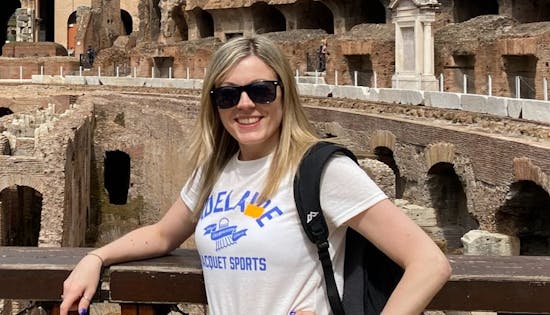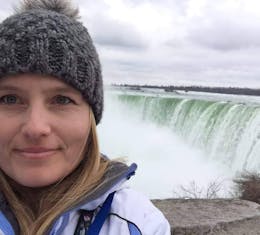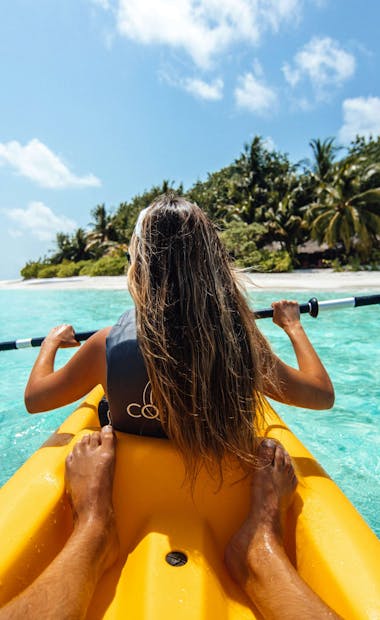The Lares Trek
Experience The Lares Trek To Machu Picchu
Popular tours
- Save1%
 View Tour
View TourThe Lares Trek - 7 Days
- Cusco to Cusco
- Age group: 12 - 100
- Max group size: 16
Was:£959From£949 - Save10%
 View Tour
View TourLares Trek to Machu Picchu & Panoramic Train - 4 Days
- Cusco to Cusco
- Age group: 12 - 99
- Max group size: 12
Was:£498From£448
The Lares Trek
Welcome to an extraordinary adventure along the scenic Lares Trek, a captivating journey that combines breathtaking Andean landscapes with cultural immersion and the awe-inspiring wonder of Machu Picchu. As one of the lesser-known but equally rewarding alternatives to the classic Inca Trail, the Lares Trek offers intrepid travelers an opportunity to explore the remote highlands of the Sacred Valley while delving into the rich cultural heritage of the Andean communities that call this region home.
Embark on a remarkable expedition as you follow ancient paths that wind through rugged mountain terrain, picturesque villages, and verdant valleys, encountering traditional Quechua-speaking communities along the way. Immerse yourself in the daily rhythms of Andean life, learning about age-old customs, textiles, and agricultural practices that have endured for centuries.
The highlight of the Lares Trek awaits at its culmination: the majestic citadel of Machu Picchu. While the Lares Trek does not lead directly to Machu Picchu like the Inca Trail, it offers an alternative approach, allowing trekkers to experience the wonder of Machu Picchu after a scenic train journey from the town of Ollantaytambo.
Marvel at the enigmatic ruins of Machu Picchu, perched amidst mist-shrouded mountains, and contemplate the mysteries of this ancient Inca citadel, a UNESCO World Heritage Site and one of the New Seven Wonders of the World.
Whether you're drawn to the rugged beauty of the Andean landscape, the rich cultural tapestry of indigenous communities, or the iconic allure of Machu Picchu, the Lares Trek promises an unforgettable journey filled with adventure, discovery, and unparalleled natural beauty. Join us as we embark on this transformative odyssey, where every step brings us closer to the heart of Peru's cultural heritage and the timeless marvel of Machu Picchu.
What Is The Lares Trek?
The Lares Trek is an alternative trekking route to Machu Picchu in Peru, offering a captivating journey through the remote and stunningly beautiful landscapes of the Sacred Valley. Unlike the classic Inca Trail, which follows ancient paths used by the Incas, the Lares Trek winds through highland Andean communities, providing trekkers with an immersive cultural experience along with breathtaking natural scenery.
The trek typically spans three to four days, starting from the village of Lares or nearby communities in the Sacred Valley. From there, trekkers traverse mountain passes, picturesque valleys, and tranquil lakes, passing through traditional Quechua-speaking villages where indigenous customs and way of life have remained largely unchanged for centuries.
One of the highlights of the Lares Trek is the opportunity to interact with local communities, learning about their traditional weaving techniques, agricultural practices, and daily life in the high Andes. Trekkers may have the chance to visit local markets, where vibrant textiles and handicrafts are sold, and to share meals with indigenous families, gaining insight into their rich cultural heritage.
While the Lares Trek does not lead directly to Machu Picchu like the Inca Trail, it offers trekkers a unique approach to reaching the iconic citadel. After completing the trek, travelers typically take a scenic train journey from the town of Ollantaytambo to Aguas Calientes, the gateway to Machu Picchu. From there, they ascend to the ancient Inca citadel, where they can explore the awe-inspiring ruins and marvel at the breathtaking panoramic views.
The Lares Trek is known for its serene beauty, cultural immersion, and sense of adventure, making it a popular choice for those seeking a more off-the-beaten-path experience on their journey to Machu Picchu. Whether you're drawn to the rugged landscapes of the Andes or the vibrant traditions of indigenous communities, the Lares Trek promises an unforgettable adventure filled with discovery and wonder.
How Long Is The Lares Trek?
The length of the Lares Trek can vary depending on the specific route chosen and the itinerary provided by tour operators. Generally, the trek spans approximately 33 to 55 kilometers (20 to 34 miles) over the course of three to four days.
Typically, the trek begins in the village of Lares or nearby communities in the Sacred Valley and winds through remote highland landscapes, picturesque valleys, and traditional Quechua-speaking villages. Trekkers traverse mountain passes, such as the Ipsaycocha Pass, and may have the opportunity to visit natural hot springs along the way, adding to the adventure and cultural experience.
The Lares Trek offers a more off-the-beaten-path approach to reaching Machu Picchu compared to the classic Inca Trail, with fewer crowds and a focus on cultural immersion in indigenous communities. After completing the trek, travelers typically take a scenic train journey from Ollantaytambo to Aguas Calientes, the gateway to Machu Picchu, where they can explore the ancient Inca citadel.
While the Lares Trek is shorter in distance compared to the Inca Trail, it still offers trekkers a rewarding and memorable journey through some of Peru's most stunning landscapes and vibrant indigenous cultures.
How High Is The Lares Trek?
The highest point along the Lares Trek is typically the Ipsaycocha Pass, which stands at an elevation of approximately 4,450 meters (14,600 feet) above sea level. This mountain pass offers stunning panoramic views of the surrounding Andean landscapes and is a highlight of the trek.
Throughout the Lares Trek, trekkers will encounter varying elevations as they traverse mountain passes, valleys, and highland plateaus. While the altitude can present challenges, especially for those who are not acclimatized to high elevations, the slower pace of the trek and the opportunity to immerse oneself in the local culture often allows for gradual adjustment.
It's important for trekkers to be mindful of the effects of altitude and to take precautions to avoid altitude sickness, such as staying hydrated, allowing time for acclimatization, and listening to their bodies. With proper preparation and care, the Lares Trek offers an unforgettable adventure through the stunning landscapes and rich cultural heritage of the Peruvian Andes.
How Fit Do I Need To Be?
The level of fitness required for the Lares Trek can vary depending on factors such as the specific route chosen, the pace of the trek, and individual preferences. However, in general, trekkers should be prepared for several days of moderate to strenuous hiking over varied terrain, including steep ascents and descents at high altitudes.
While the Lares Trek is considered less physically demanding than the classic Inca Trail, it still presents challenges that require a reasonable level of fitness and stamina. Trekkers should be comfortable walking for several hours each day, carrying a daypack with essentials, and navigating uneven terrain.
Some specific fitness considerations for the Lares Trek include:
Cardiovascular Endurance: The trek involves hiking at high altitudes, which can make breathing more difficult and increase the cardiovascular workload. Building cardiovascular endurance through activities like hiking, walking, cycling, or running can help prepare for the demands of the trek.
Leg Strength: Strong leg muscles are essential for tackling steep ascents and descents along the trail. Incorporating exercises like squats, lunges, and stair climbing into your fitness routine can help build leg strength and endurance.
Core Stability: A strong core helps maintain balance and stability while hiking over uneven terrain. Core exercises such as planks, mountain climbers, and yoga can help improve core strength and stability.
Flexibility: Flexibility is important for preventing injury and improving overall mobility on the trail. Incorporating stretching exercises into your routine can help improve flexibility and reduce the risk of muscle strain.
It's important to assess your own fitness level and physical capabilities before embarking on the Lares Trek and to tailor your preparation accordingly. Starting a fitness regimen several weeks or months before your trek can help build the strength, endurance, and stamina needed to fully enjoy this unforgettable adventure in the Peruvian Andes. Additionally, hiking at a comfortable pace and taking regular breaks can help conserve energy and minimize fatigue during the trek.
Is The Lares Trek Dangerous?
While the Lares Trek is not inherently dangerous, like any outdoor adventure, it presents certain risks and challenges that should be taken seriously. Some factors to consider include:
Altitude: The trek reaches high elevations, with the highest point, Ipsaycocha Pass, standing at over 4,450 meters (14,600 feet) above sea level. Altitude sickness can affect some trekkers, especially if they ascend too quickly without proper acclimatization. It's essential to allow time for acclimatization and be aware of the symptoms of altitude sickness.
Terrain: The Lares Trek involves hiking over varied terrain, including steep ascents and descents, rocky paths, and uneven surfaces. Trekkers should have a reasonable level of fitness and agility to navigate these terrain features safely.
Weather: Weather conditions along the trek can be unpredictable, with the potential for rain, wind, and cold temperatures, especially at higher elevations. Proper gear and clothing are essential to staying warm and dry.
Health and Safety: Basic precautions should be taken to ensure health and safety on the trek, including staying hydrated, wearing appropriate footwear, using sunscreen, and following the guidance of experienced guides.
Cultural Considerations: The Lares Trek passes through indigenous communities where local customs and traditions should be respected. Trekkers should be mindful of cultural sensitivities and adhere to local guidelines and etiquette.
Overall, while the Lares Trek presents challenges, it is a well-traveled route with experienced guides and support staff available to assist trekkers. With proper preparation, caution, and respect for the environment and local communities, the Lares Trek offers a rewarding and memorable adventure through the stunning landscapes and vibrant culture of the Peruvian Andes.
What Is The Best Time Of year For The Lares Trek?
The best time of year for the Lares Trek is during the dry season, which typically runs from May to September. During these months, the weather is generally more predictable, with minimal rainfall and clearer skies, making for better trekking conditions and clearer views of the surrounding landscapes.
Within the dry season, the peak months of June, July, and August tend to be the most popular times for trekking, as the weather is typically at its best and the trail can be busy with other travelers. If you prefer to avoid the crowds, consider trekking during the shoulder months of May or September when the weather is still favorable, but there are fewer tourists on the trail.
It's worth noting that while the dry season offers more favorable weather conditions, it can also be colder, especially at night and at higher elevations. Additionally, while the Lares Trek is less affected by rainfall compared to the Inca Trail, there is still the possibility of encountering some rain, particularly during the transition months of April and October.
Overall, the best time to trek the Lares Trail depends on your preferences for weather, crowds, and availability of permits. The dry season from May to September is generally considered the optimal time for most trekkers, offering a balance of favorable weather conditions and manageable crowds.
What Equipment Do I Need For The Lares Trek?
To ensure a safe and enjoyable trek along the Lares Trail, it's essential to pack the right equipment and gear. Here's a list of essential items you'll need for the trek:
Backpack: A comfortable hiking backpack to carry your essentials. A daypack of 20-30 liters is usually sufficient.
Clothing:
- Moisture-wicking base layers
- Insulating layers (fleece or down jacket)
- Waterproof and breathable jacket and pants
- Sturdy hiking boots with good ankle support
- Comfortable socks (synthetic or wool)
- Hat or beanie for warmth
- Gloves or mittens
- Sunglasses and sun hat
Sleeping Gear: If camping along the trail, you'll need a sleeping bag suitable for cold temperatures and a lightweight sleeping pad for insulation and comfort.
Trekking Poles: Optional but helpful, especially for navigating steep ascents and descents.
Water and Hydration: Bring a reusable water bottle or hydration reservoir and purification tablets or a filter to treat water from streams along the trail.
Snacks and Meals: High-energy snacks like nuts, dried fruits, energy bars, and trail mix. If you're not on a guided tour, you'll need to bring your own meals or arrange for a cook to accompany you.
Toiletries and Personal Items:
- Toilet paper and small trowel for waste disposal
- Biodegradable soap
- Toothbrush and toothpaste
- Sunscreen and lip balm with SPF
- Insect repellent
- Personal medications and first-aid kit
Headlamp or Flashlight: Essential for navigating camp at night or early morning starts for summit attempts.
Camera: Capture the stunning scenery and cultural experiences along the trail.
Cash: Bring enough cash for tipping guides, cooks, and horsemen, as well as purchasing snacks or souvenirs in local villages.
Travel Documents: Passport, travel insurance, and any necessary permits or tickets.
It's important to pack light and only bring what you truly need, as you'll be carrying your gear throughout the trek. Additionally, be prepared to pack out all trash and adhere to Leave No Trace principles to minimize your impact on the environment.
What is The Food Like On The Lares Trek?
The food on the Lares Trek is typically hearty, delicious, and tailored to provide trekkers with the energy they need to tackle the challenging terrain. While the exact meals can vary depending on the tour operator and the specific itinerary, here's an overview of what you might expect:
Breakfast: Breakfasts often include hot drinks like coffee, tea, or cocoa, along with a variety of options such as scrambled eggs, pancakes, oatmeal, bread, fruit, and yogurt. Some tours may also offer local specialties like quinoa porridge or Andean potatoes.
Lunch: Lunches are usually packed meals that you'll enjoy along the trail or at a scenic spot. Typical lunch items include sandwiches, wraps, fruit, snacks, and beverages like juice or water. Some tours may also provide hot lunches cooked by your trekking team.
Dinner: Dinners are often the heartiest meals of the day, featuring dishes like soups, stews, pasta, rice, quinoa, potatoes, and vegetables. Protein sources such as chicken, beef, trout, or beans are commonly included. Vegetarian and vegan options are usually available upon request. Dinners are accompanied by hot drinks and sometimes dessert.
Snacks: Throughout the day, you'll have access to snacks like trail mix, energy bars, fresh fruit, and cookies to keep your energy levels up between meals.
Special Occasions: Some tour operators may arrange special meals or treats to celebrate milestones along the trek, such as reaching a high pass or arriving at Machu Picchu. This could include traditional Peruvian dishes or snacks, hot drinks, or even a small celebration with your trekking group.
Overall, while the food on the Lares Trek is simple, it's typically freshly prepared, nutritious, and satisfying after a day of hiking. Most tour operators employ skilled cooks who are adept at catering to dietary preferences and restrictions, ensuring that all trekkers are well-fed and ready for the next day's adventure.
What Is The Difference Between The Lares Trek And Inca Trail?
The Lares Trek and the Inca Trail are both popular trekking routes in Peru that lead to the iconic archaeological site of Machu Picchu, but they offer different experiences in terms of scenery, culture, and logistics. Here are some key differences between the two treks:
Scenery:
- Inca Trail: The Inca Trail traverses diverse landscapes, including high-altitude Andean mountains, cloud forests, and subtropical valleys. Trekkers encounter Inca ruins, lush vegetation, and panoramic vistas along the way.
- Lares Trek: The Lares Trek winds through the remote highlands of the Sacred Valley, passing picturesque valleys, tranquil lakes, and traditional Quechua-speaking villages. Trekkers experience stunning mountain scenery, rural landscapes, and vibrant indigenous culture.
Cultural Experience:
- Inca Trail: The Inca Trail follows ancient paths laid by the Incas, passing by numerous archaeological sites and ruins, including Wiñay Wayna and Intipata. Trekkers learn about the history and engineering marvels of the Inca civilization.
- Lares Trek: The Lares Trek provides opportunities to interact with indigenous communities, learning about their traditional customs, textiles, and agricultural practices. Trekkers may visit local markets, share meals with families, and experience the rich cultural heritage of the Andean highlands.
Trail Difficulty and Altitude:
- Inca Trail: The Inca Trail is longer and higher in altitude compared to the Lares Trek, reaching elevations of over 4,200 meters (13,800 feet) at its highest point, Dead Woman's Pass. The trail involves steep ascents and descents and can be physically challenging, requiring a moderate to high level of fitness.
- Lares Trek: The Lares Trek is generally considered less strenuous than the Inca Trail, with lower maximum altitudes (around 4,450 meters or 14,600 feet) and shorter overall distances. The trek still involves hiking at high elevations and varied terrain, but it may be more accessible to trekkers of varying fitness levels.
Permits and Regulations:
- Inca Trail: Access to the Inca Trail is strictly regulated by the Peruvian government, and trekkers must obtain permits through licensed tour operators. Permits can sell out quickly, especially during the peak season.
- Lares Trek: Permits are not required for the Lares Trek, making it a more flexible option for those who may not be able to secure permits for the Inca Trail. However, trekking with a licensed tour operator is still recommended for safety and logistical support.
Overall, both the Inca Trail and the Lares Trek offer unique and unforgettable experiences, each with its own highlights and challenges. Whether you're drawn to the ancient ruins and history of the Inca Trail or the cultural immersion and scenic beauty of the Lares Trek, both treks promise an unforgettable journey to Machu Picchu.
Is The Lares Trek Busy?
Compared to the classic Inca Trail, the Lares Trek tends to be less busy and crowded. The Inca Trail is limited in terms of the number of trekkers allowed each day due to permit regulations imposed by the Peruvian government, and as a result, it can book up quickly, especially during the peak season.
In contrast, the Lares Trek does not have the same permit restrictions, and there are fewer trekkers on the trail overall. While it's still possible to encounter other groups and travelers, particularly during the high season or at popular camping spots, the Lares Trek generally offers a more tranquil and less crowded experience compared to the Inca Trail.
The lower number of trekkers on the Lares Trek can contribute to a more peaceful and immersive experience in nature, allowing travelers to better appreciate the stunning landscapes, encounter local communities without the crowds, and enjoy a sense of solitude along the trail.
That said, the popularity of the Lares Trek has been increasing in recent years as more travelers seek alternative routes to Machu Picchu, so it's still advisable to book your trek in advance, especially if you plan to travel during the peak season or prefer to have a more private experience on the trail.
What Are The Attractions Of The Lares Trek?
The Lares Trek offers a wealth of attractions and highlights that make it a popular choice for travelers seeking an alternative route to Machu Picchu. Some of the key attractions of the Lares Trek include:
Stunning Scenery: The Lares Trek winds through some of the most breathtaking landscapes in the Peruvian Andes, including highland plateaus, verdant valleys, tranquil lakes, and snow-capped mountains. Trekkers are treated to panoramic vistas of the surrounding peaks and valleys, providing ample opportunities for photography and awe-inspiring moments in nature.
Cultural Immersion: One of the highlights of the Lares Trek is the opportunity to interact with indigenous Quechua-speaking communities along the way. Trekkers have the chance to visit local villages, learn about traditional customs and textiles, and share meals with local families, providing a rich cultural experience and insight into Andean life.
Remote Andean Villages: The Lares Trek passes through remote highland villages that are often inaccessible by road, allowing trekkers to experience a way of life that has remained largely unchanged for centuries. These villages are surrounded by stunning scenery and offer a glimpse into traditional Andean culture and customs.
Hot Springs: Some itineraries of the Lares Trek include a visit to natural hot springs, where trekkers can relax and soak in the therapeutic waters after a day of hiking. These hot springs provide a welcome respite and a chance to rejuvenate tired muscles amidst beautiful natural surroundings.
Less Crowded Trails: Compared to the classic Inca Trail, the Lares Trek tends to be less crowded and offers a more peaceful and secluded trekking experience. With fewer trekkers on the trail, travelers can enjoy a sense of solitude in nature and better appreciate the stunning landscapes and cultural attractions along the way.
Gateway to Machu Picchu: While the Lares Trek does not lead directly to Machu Picchu like the Inca Trail, it offers a unique approach to reaching the iconic citadel. After completing the trek, travelers typically take a scenic train journey from Ollantaytambo to Aguas Calientes, where they can explore Machu Picchu the following day.
Overall, the Lares Trek offers a rewarding and unforgettable journey through some of Peru's most stunning landscapes and vibrant indigenous cultures, making it a popular choice for travelers seeking adventure, cultural immersion, and natural beauty on their way to Machu Picchu.
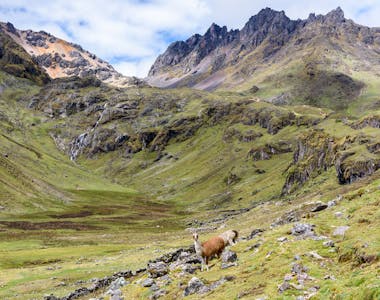
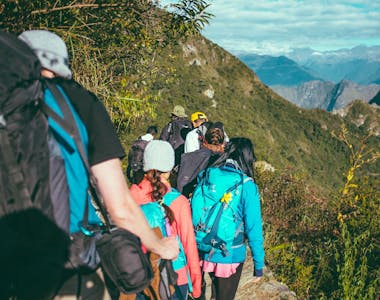
Book With Confidence
Monthly Payments
Spread the costs with no interest or additional fees
Best Price Guarantee
We won't be beaten on price. If you find this adventure at a lower price please get in touch!
Reserve now & pay later
Reserve your adventure today and pay later, free of charge
ATOL protected
Book with confidence
Hold your space today, for free
or book your trip with a deposit and then pay the rest in instalments.
Reserve your flights with us
Add flights to your booking and we'll take care of the rest. You'll get 24/7 support from our team & ATOL protection.
Speak to our experts
Call or email our expert team to find out more and help with ideas and planning.
